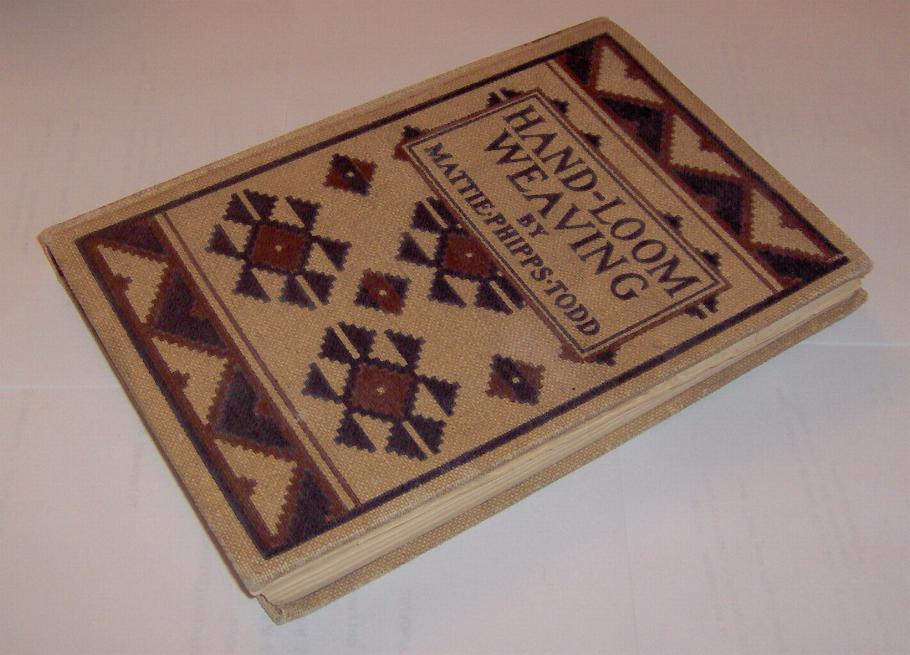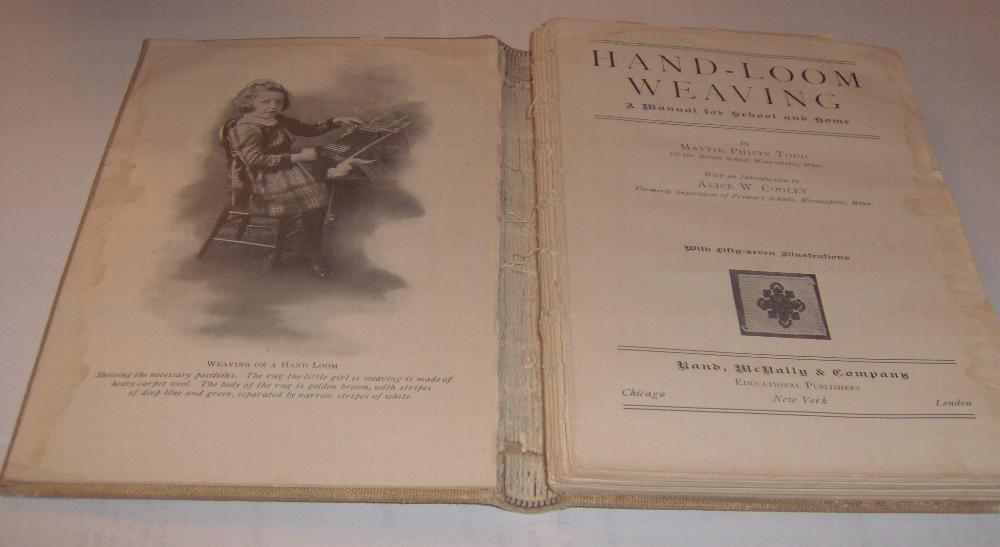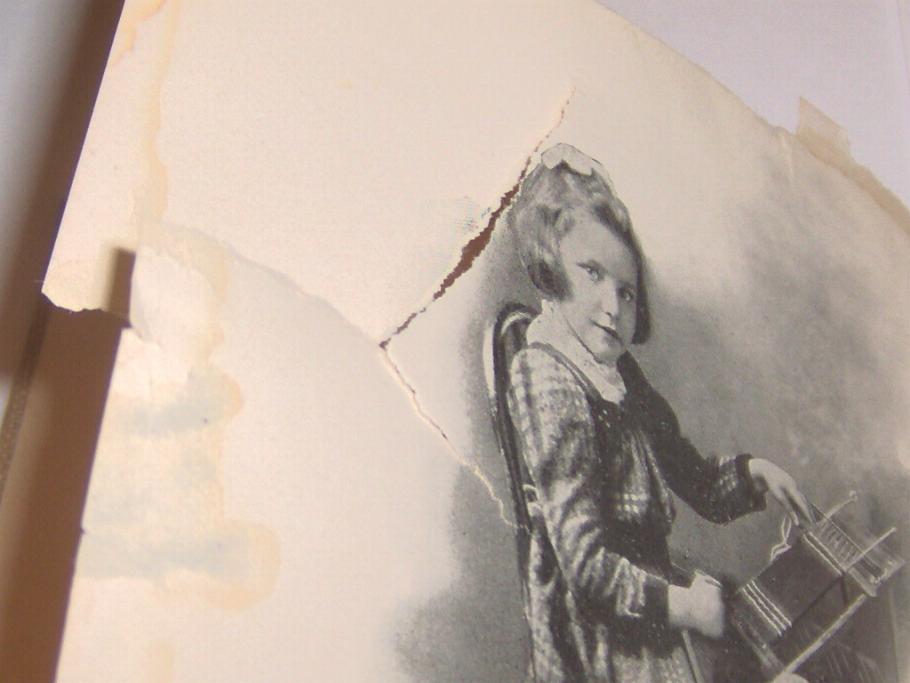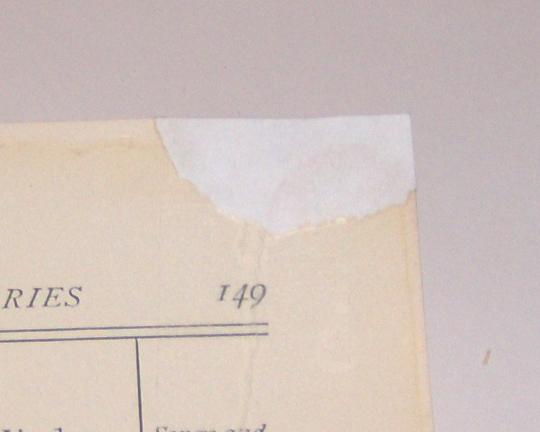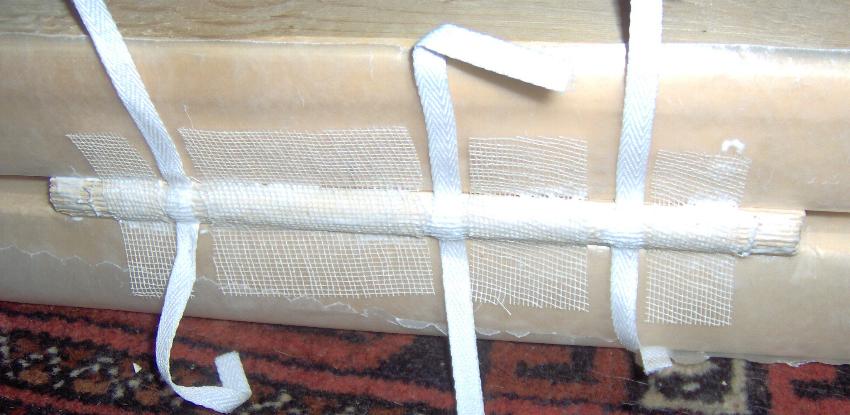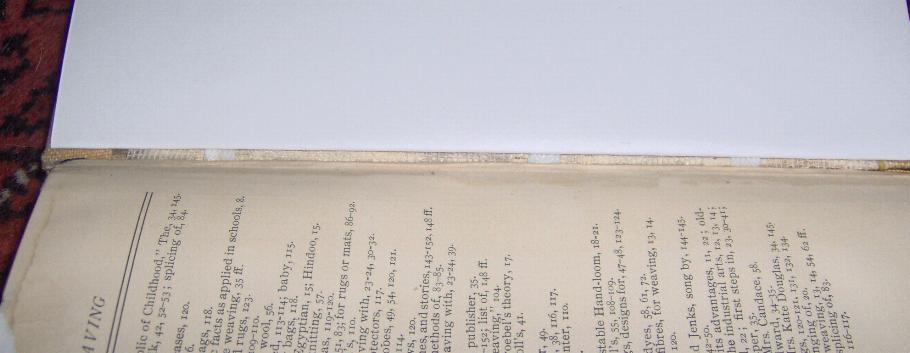The
finishing touch is to insert some new end-papers to cover the boards,
tapes, and crash, which are not altogether beautiful as seen above.
I used some fairly simple endpapers, of the sort that one would
call "tipped in" had I just glued the spineward 1/8" or so to the outer
page of the text block (which is precisely what was done with the
original ones). For the sake of lasting strength, I used a broad
linen tape to cover the remaining gap show in the picture below, which
was made specifically as a book-hinge; strangely, I appear to have
neglected to take a picture of the final product, so I'll have to ask
you to use your imagination to apply an off-white rectangle which
sticks to equal amounts of the end paper and the text page and conceals
the little bit of tape peeking out below quite nicely.
So,
there's the process completed. I won't say "as good as new"
because the acid in the paper has been doing itself an injury for 90+
years, but certainly more of a book than a book-shaped collection of
loose pages.

